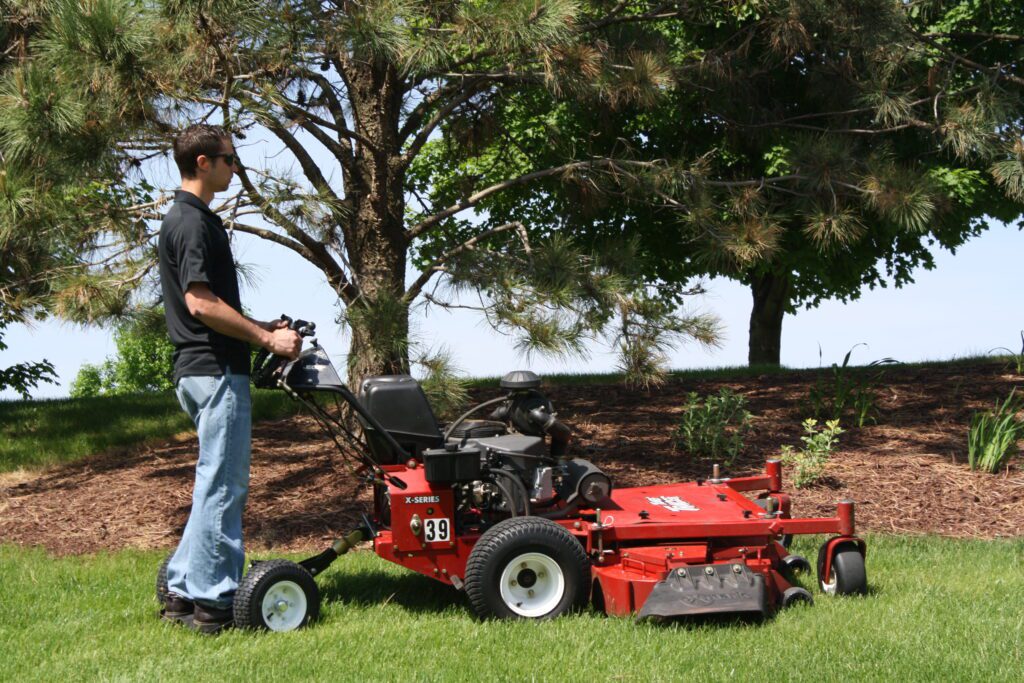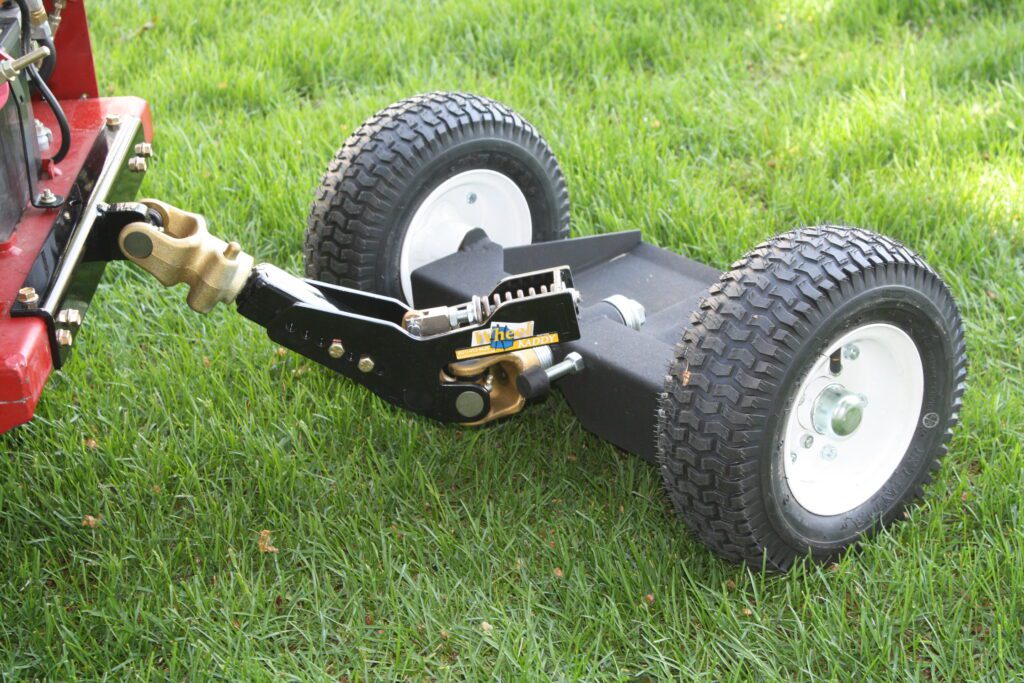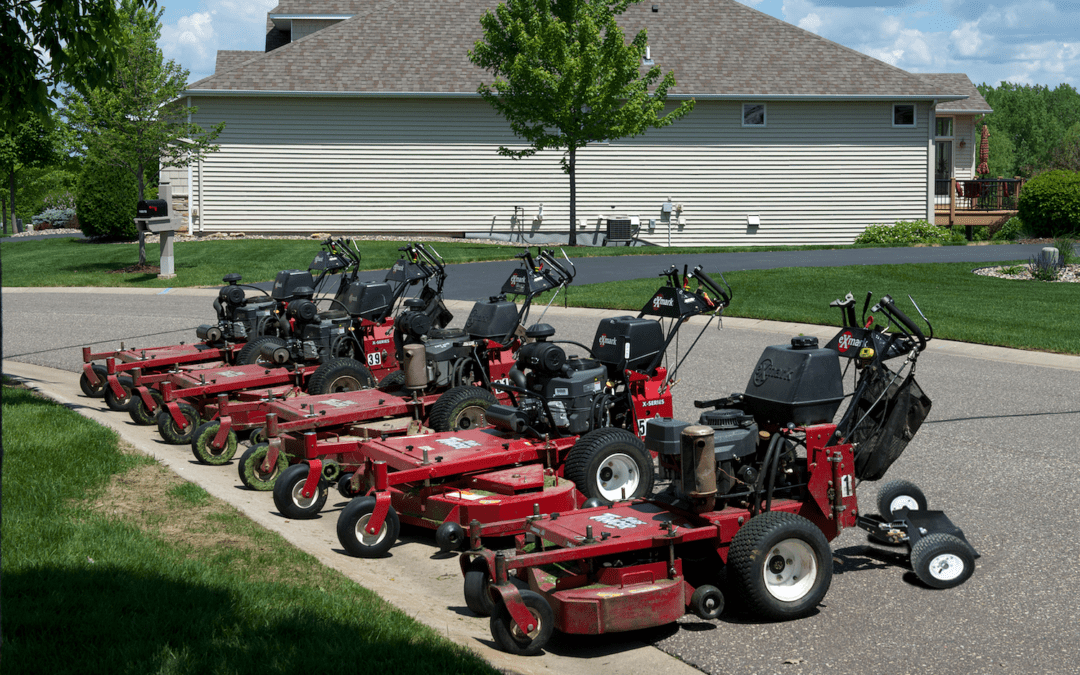If you are in the commercial lawn care business, you are likely familiar with walk behind lawn mowers. One of the most common accessories for this type of mower is a walk behind sulky.
And if you haven’t used a walk behind mower, (not to be confused with “push mower”) the term “sulky” is probably foreign to you and you find yourself asking, “What is a walk behind sulky, and what does it do?”
What is a walk behind sulky?

A walk behind sulky is a walk behind sulky is a commonly a two-wheel cart than the person operating a walk-behind mower can stand on and ride instead of having to walk. (Think Segway or hoverboard in trailer form.) The 2-wheel transporter attachment secures to the rear frame of a self-propelled wide area mower.
How have mower sulkies evolved?
A growing staple since the 1980’s, many versions of sulkies for mowers have been created over the years, evolving from a one-wheel sulky to a more stable 2-wheel version. The problem with most of these early models is that they weren’t very comfortable or durable. They also had a tendency to jackknife when backing up the mower.
KAGE Innovation co-founder Mike Stephan has been a big fan of walk behind mowers for years, growing up in the landscape industry with a passion for mowing lawns. He loved how he could mow faster and with less lawn damage than any push, riding and even zero turn mower.
However, he found himself frustrated when the popular brands of sulkies he had been using kept falling apart, noting that they often needed to be replaced in a year or less when used heavily.
Determined to create a more durable and comfortable way to cut lawns with this type of mower, he developed the Wheel Kaddy to address these concerns.
1. Fatigue Reduction
The No. 1 concern when creating the Wheel Kaddy was to make it comfortable to use, no matter the conditions.
Larger Tires
He started with increasing the diameter of the tires. In itself, the larger tires on the Wheel Kaddy reduced the bouncing and jolting that took place when mowing on bumpy ground.
Suspension
Next, he added suspension, further reducing the fatigue imposed on the body by letting the sulky absorb most of impact – rather than the knees, hips and back of the mower operator.
Standing Angles
Not everyone has the luxury of mowing a completely flat lawn. In fact, the vast majority do not. Therefore, being able to stand safely and comfortably even when going up and down hills – and even on side hills is critically important. For that reason, Mike made the front-to-back platform pitch of the sulky adjustable. This not only accommodates the different brands and designs of walk-behind mowers, but also the preference of the operator.
He also included a bridge in the middle of the platform, which serves multiple purposes. It helps prevent excessive shifting or sliding of the on the platform as well as offering a different angle to stand on when mowing side hills that allows the operator to remain in a more natural position and opposing to having to lean.
2. Durability
Inspired by his time operating and repairing farm equipment, Mike implemented many of the best features of this equipment into the wheel kaddy sulkies.
If you’ve ever used a tractor, you may find something oddly familiar with the quick release mount of the Wheel Kaddy. That is because the rock-solid mount is modeled after a PTO coupler and yoke.
Addressing the concern about jackknifing in reverse, which can cause unnecessary wear and tear on the mower, sulky and lawn, he even made version of Wheel Kaddy that allows the tires to travel under the arm for a 360-degree pivot.
What’s the best walk behind sulky?

While the KAGE Wheel Sulky wasn’t the first on the market, it is clearly the best, offering the most comfort and greatest durability of any two-wheel sulky on the market. And this is all backed by a 2-year structural warranty!




Recent Comments